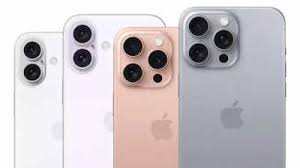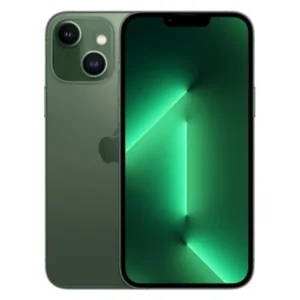
Brief overview of iPhone 16
The iPhone 16 is set to be Apple’s most advanced smartphone yet. It will likely feature improved processing power, enhanced camera capabilities, and potentially new design elements. The device is expected to build upon the strengths of its predecessors while introducing innovative features to stay competitive in the rapidly evolving smartphone market. Apple aims to address user needs and preferences with this new model, potentially incorporating feedback from previous iterations. The iPhone 16 is anticipated to maintain Apple’s reputation for high-quality, user-friendly devices while pushing the boundaries of smartphone technology.
Release date and availability
Many people are asking “When is the iPhone 16 coming out?”. While Apple keeps its plans under wraps, we can make educated guesses based on past patterns. Typically, new iPhones are announced in early September and become available for purchase later that month. So, when is iPhone 16 coming out? Most likely in September 2024. The exact date will be revealed at Apple’s annual fall event. After the announcement, there’s usually a short pre-order period before the phones hit store shelves. Availability might vary by region and model, with some versions potentially facing supply constraints initially. It’s wise to stay tuned to Apple’s official channels for the most accurate information on release dates and availability.
Here’s a speculative overview of the iPhone 16 specifications, based on industry trends and Apple’s typical upgrade patterns:
Design and Display
⦁ Size: 6.1″ to 6.7″ (varies by model)
⦁ Technology: OLED with ProMotion (120Hz refresh rate)
⦁ Resolution: Possibly 2532 x 1170 pixels (may vary by model)
⦁ Brightness: Up to 2000 nits peak brightness
The iPhone 16’s design and display are crucial aspects that users are eager to learn about. Apple typically refines its design with each new model, balancing aesthetics with functionality. The display is often a standout feature, incorporating the latest screen technology to provide an immersive viewing experience. The design may include updates to the phone’s shape, size, or materials used, while the display could see improvements in resolution, brightness, or color accuracy. These elements significantly influence the overall user experience and are often key selling points for new iPhone models.
Processor
⦁ A18 Bionic chip (5nm or 3nm process)
⦁ 6-core CPU with 2 high-performance cores and 4 energy-efficient cores
⦁ 5-core GPU
⦁ 16-core Neural Engine
RAM
⦁ 6GB to 8GB (possibly more for Pro models)
Storage options
⦁ 128GB, 256GB, 512GB, 1TB (highest capacity likely for Pro models)
Camera System:
⦁ Triple-lens rear camera (Pro models):
⦁ 48MP main camera
⦁ 12MP ultra-wide camera
⦁ 12MP telephoto camera with 3x optical zoom
⦁ Dual-lens rear camera (standard models):
⦁ 12MP main camera
⦁ 12MP ultra-wide camera
⦁ 12MP TrueDepth front camera with autofocus
Battery:
⦁ Capacity varying from 3200mAh to 4400mAh (depends on model size)
⦁ Fast charging (up to 50% charge in 30 minutes)
⦁ MagSafe wireless charging up to 15W
Connectivity:
⦁ 5G (sub-6 GHz and mmWave)
⦁ Wi-Fi 6E or Wi-Fi 7
⦁ Bluetooth 5.3
⦁ Ultra Wideband chip
⦁ Satellite connectivity for emergencies
Security:
⦁ Face ID with improved sensors
⦁ Possibly under-display Touch ID (rumored)
Operating System:
⦁ iOS 18 (at launch)
Other Features:
⦁ IP68 water and dust resistance
⦁ Ceramic Shield front
⦁ MagSafe support
⦁ Likely USB-C port (replacing Lightning)
The iPhone 16 offers exciting features and improvements, making it a potential upgrade for users with older models due to enhanced performance and capabilities. However, those with recent iPhones may find the changes less significant. Consider your budget and smartphone usage, as advancements in camera, processing power, and display quality could enhance your experience. It’s also worth noting that previous models may see price reductions, providing good value. Ultimately, assess whether the iPhone 16 meets your needs and budget to determine if it’s a wise investment.
Pros:
⦁ Improved performance: Faster processor and potentially more RAM for smoother multitasking.
⦁ Enhanced camera capabilities: Better photo and video quality, especially in low-light conditions.
⦁ Longer battery life: More efficient chip and software optimizations may extend usage time.
⦁ Advanced display: Potentially higher refresh rates, better color accuracy, and brightness.
⦁ New features: Could include innovative AI capabilities or improved augmented reality functions.
⦁ 5G improvements: Faster and more reliable cellular connectivity.
⦁ Latest software: Will come with the newest iOS version and support updates for years.
⦁ Potential design refresh: Might feature a new look or improved durability.
Cons:
⦁ High price: New iPhones are usually expensive, especially higher-end models.
⦁ Minimal upgrades for recent iPhone owners: If you have a recent model, changes might not be significant.
⦁ Learning curve: New features or interface changes may take time to get used to.
⦁ Potential first-generation issues: New features might have bugs that get ironed out in later updates.
⦁ Environmental impact: Upgrading phones frequently contributes to electronic waste.
⦁ Accessory compatibility: Might require new cases or accessories if the design changes significantly.
⦁ Possible supply constraints: High demand could lead to limited availability at launch.
⦁ Feature overkill: Some new features might be unnecessary for basic smartphone users.
Remember, these pros and cons are speculative and based on typical smartphone trends. The actual features and their implications will become clear when Apple officially announces the iPhone 16.